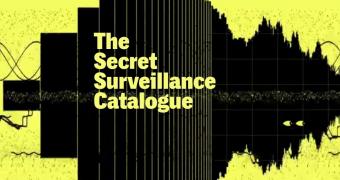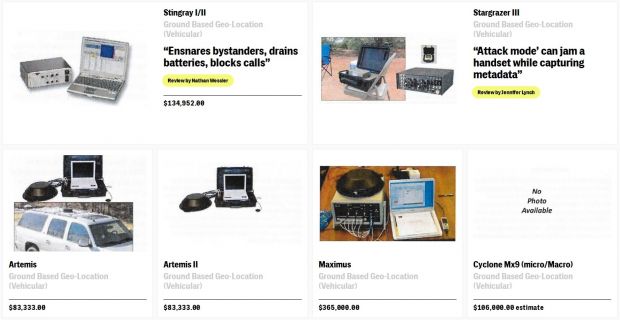US law enforcement agencies have access to a secret catalog of surveillance tech, containing 53 devices previously available only to military and state intelligence institutions.
The catalog has been obtained and leaked by The Intercept, the online newspaper that was responsible for publishing all of Edward Snowden's NSA revelations.
According to the publication, their reporters obtained the catalog from a source within the intelligence community concerned about the militarization of domestic law enforcement agencies.
The catalog lists 53 surveillance devices, with prices ranging from $5,500 to $1,500,000 (€5,000 to €1,380,000). Some devices don't have a price listed but don't look to be very cheap either, having been specifically created for working mounted on UAVs (Unmanned Air Vehicles, drones).
Since most equipment is manufactured by the NSA or CIA, they all have cool-sounding codenames like Cyberhawk, Spartacus, Kingfish, Buckshot, Artemis, RadioEye, Typhoon, Windjammer, Nebula, or Raven.
Stingrays are also part of the catalog
Most of the devices are basic IMSI catchers (known as Stingrays or dirt boxes), but the catalog also lists other more complex tools, almost all being designed to target cellular phone networks.
Based on their pricing, the equipment can target more or fewer phones at the same time, can or cannot include geographical location detection, or can work on a larger geographical area.
Some of the devices can be carried by operatives on the field while others need to be mounted on vehicles. This type of devices is usually the most expensive one and with the most wide-reaching surveillance features.
Listed devices have the capability of fooling phones into connecting to their fake GSM network, stealing SMS messages and phone contact lists, listening in on conversations, extracting media files, retrieving deleted texts, and much more.
Members of The Intercept, the Electronic Frontier Foundation, and the American Civil Liberties Union claim that one-third of the devices listed in the catalog have never been described or shown in public before.
The original catalog can be found here, but a more user-friendly version is also available on a special website built by The Intercept.

 14 DAY TRIAL //
14 DAY TRIAL // 

